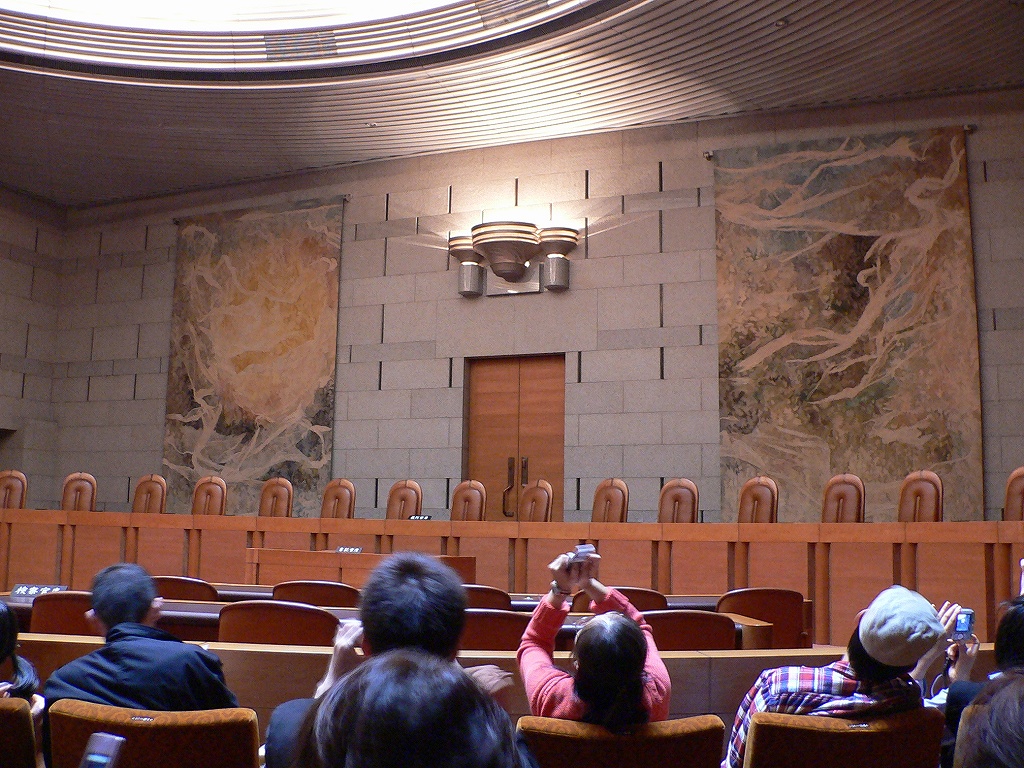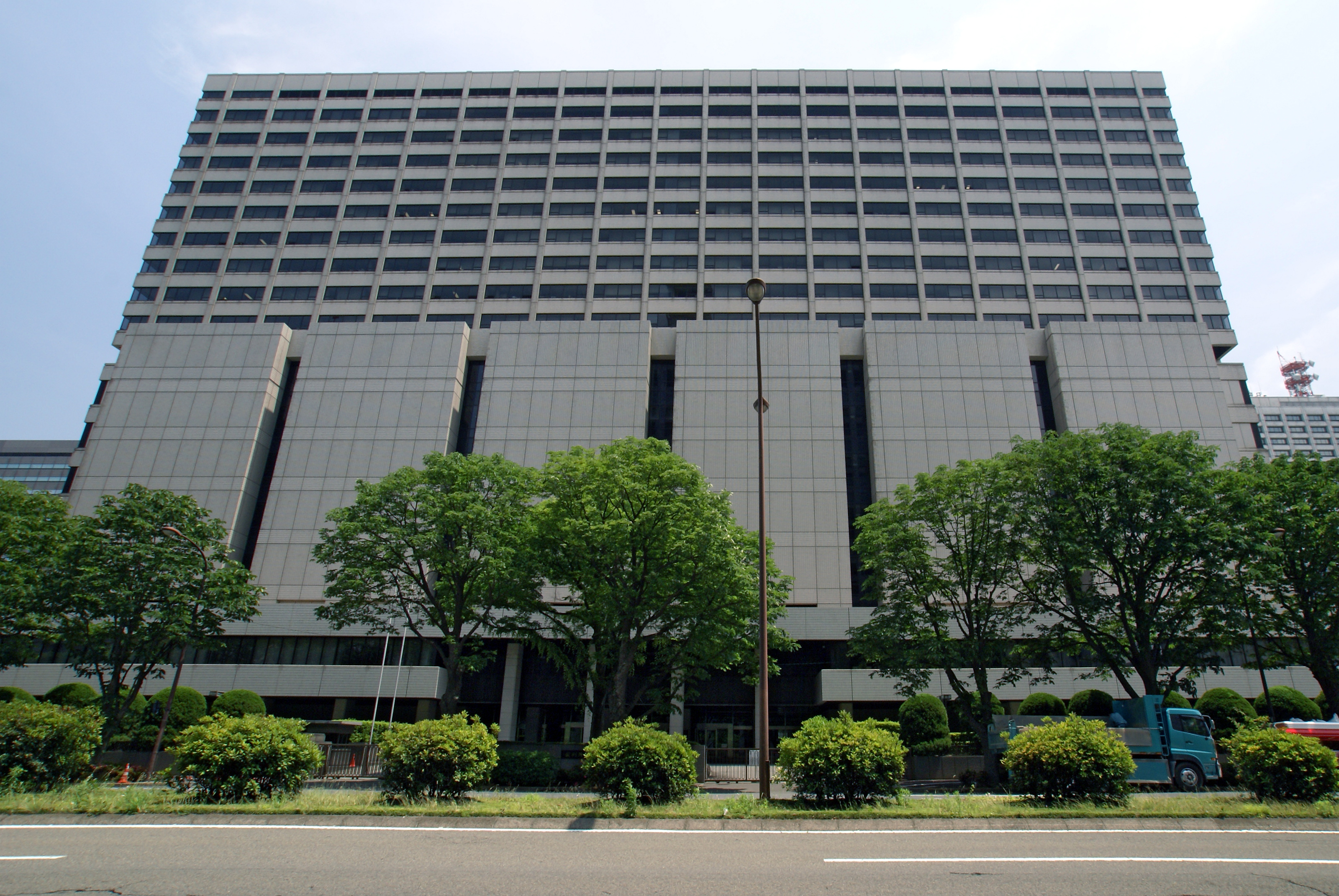|
Hiroko Nagata
, sometimes mistakenly referred to as Yōko Nagata, was a Japanese leftist revolutionary and terrorist who was convicted of murder and sentenced to death. She was convicted of murdering, or participating in the murders of, fellow members of the United Red Army (URA) during a group purge in Gunma Prefecture in February 1972. During the purge, Nagata, acting as vice-chairman of the URA, directed the killing of twelve members of the group by beatings or by forced exposure to frigid winter air temperatures. A civilian who was not a member of the URA who was present during the purge was also killed. Arrested on 16 February 1972, Nagata was tried, convicted, and sentenced to death for her participation in the killings. While awaiting execution, Nagata died from brain cancer on 5 February 2011 at the Tokyo Detention House. Biography Hiroko Nagata was born in Tokyo and, after graduation from Chofu Gakuen High School, entered Kyoritsu College of Pharmacy (defunct in 2008 and merged into K ... [...More Info...] [...Related Items...] OR: [Wikipedia] [Google] [Baidu] |
Tokyo
Tokyo (; ja, 東京, , ), officially the Tokyo Metropolis ( ja, 東京都, label=none, ), is the capital and largest city of Japan. Formerly known as Edo, its metropolitan area () is the most populous in the world, with an estimated 37.468 million residents ; the city proper has a population of 13.99 million people. Located at the head of Tokyo Bay, the prefecture forms part of the Kantō region on the central coast of Honshu, Japan's largest island. Tokyo serves as Japan's economic center and is the seat of both the Japanese government and the Emperor of Japan. Originally a fishing village named Edo, the city became politically prominent in 1603, when it became the seat of the Tokugawa shogunate. By the mid-18th century, Edo was one of the most populous cities in the world with a population of over one million people. Following the Meiji Restoration of 1868, the imperial capital in Kyoto was moved to Edo, which was renamed "Tokyo" (). Tokyo was devastate ... [...More Info...] [...Related Items...] OR: [Wikipedia] [Google] [Baidu] |
Keio University
, mottoeng = The pen is mightier than the sword , type = Private research coeducational higher education institution , established = 1858 , founder = Yukichi Fukuzawa , endowment = N/A , president = Prof. Kohei Itoh , city = Minato , state = Tokyo , country = Japan , coor = , faculty = full time 2,791 , administrative_staff = full-time 3,216 , students = 33,437 , undergrad = 28,641 , postgrad = 4,796 , doctoral = 1,426excluding master course students as students in "Doctorate (prior)" , other_students = 0 In 2021, research students and auditors were not recruited due to the global epidemic of COVID‐19 (coronavirus disease). , campus = Urban , free_label = Athletics , free ... [...More Info...] [...Related Items...] OR: [Wikipedia] [Google] [Baidu] |
Brain Atrophy
Cerebral atrophy is a common feature of many of the diseases that affect the brain. Atrophy of any tissue means a decrement in the size of the cell, which can be due to progressive loss of cytoplasmic proteins. In brain tissue, atrophy describes a loss of neurons and the connections between them. Brain atrophy can be classified into two main categories: generalized and focal atrophy. Generalized atrophy occurs across the entire brain whereas focal atrophy affects cells in a specific location. If the cerebral hemispheres (the two lobes of the brain that form the cerebrum) are affected, conscious thought and voluntary processes may be impaired. Some degree of cerebral shrinkage occurs naturally with the dynamic process of aging. Structural changes continue during adulthood as brain shrinkage commences after the age of 35, at a rate of 0.2% per year. The rate of decline is accelerated when individuals reach 70 years old. By the age of 90, the human brain will have experienced a 15% l ... [...More Info...] [...Related Items...] OR: [Wikipedia] [Google] [Baidu] |
Brain Tumor
A brain tumor occurs when abnormal cells form within the brain. There are two main types of tumors: malignant tumors and benign (non-cancerous) tumors. These can be further classified as primary tumors, which start within the brain, and secondary tumors, which most commonly have spread from tumors located outside the brain, known as brain metastasis tumors. All types of brain tumors may produce symptoms that vary depending on the size of the tumor and the part of the brain that is involved. Where symptoms exist, they may include headaches, seizures, problems with vision, vomiting and mental changes. Other symptoms may include difficulty walking, speaking, with sensations, or unconsciousness. The cause of most brain tumors is unknown. Uncommon risk factors include exposure to vinyl chloride, Epstein–Barr virus, ionizing radiation, and inherited syndromes such as neurofibromatosis, tuberous sclerosis, and von Hippel-Lindau Disease. Studies on mobile phone exposure hav ... [...More Info...] [...Related Items...] OR: [Wikipedia] [Google] [Baidu] |
Retrial
A new trial or retrial is a recurrence of a court case. A new trial may potentially be ordered for some or all of the matters at issue in the original trial. Depending upon the rules of the jurisdiction and the decision of the court that ordered the new trial, a new trial may occur if: *a jury is unable to reach a verdict (see hung jury); *a trial court grants a party's motion for a new trial, usually on the grounds of a legal defect in the original trial; or *an appellate court reverses a judgment under circumstances requiring that the case be tried again. In some types of cases (for example, if the original trial court was not a court of record) or in some legal systems, if the losing party to a case appeals, then the appellate court itself will hold a new trial, known as a trial ''de novo''. In the United States The United States of America (U.S.A. or USA), commonly known as the United States (U.S. or US) or America, is a country primarily located in North America. ... [...More Info...] [...Related Items...] OR: [Wikipedia] [Google] [Baidu] |
Supreme Court Of Japan
The , located in Hayabusachō, Chiyoda, Tokyo, Chiyoda, Tokyo, is the Supreme court, highest court in Japan. It has ultimate judicial authority to interpret the Constitution of Japan, Japanese constitution and decide questions of national law. It has the power of judicial review, which allows it to determine the constitutionality of any law or official act. History The modern Supreme Court was established in Article 81 of the Constitution of Japan in 1947. There was some debate among the members of the Supreme Commander for the Allied Powers, SCAP legal officers who drafted the constitution and in the National Diet, Imperial Diet meeting of 1946 over the extent of the power of the judiciary, but it was overshadowed by other major questions about popular sovereignty, the role of the emperor, and the renunciation of war. Although the ratified wording in Article 81 states that court possesses the power of judicial review, a part of the court's early history involved clarifying the ... [...More Info...] [...Related Items...] OR: [Wikipedia] [Google] [Baidu] |
Tokyo High Court
is a high court in Kasumigaseki, Chiyoda, Tokyo, Japan. The is a special branch of Tokyo High Court. Japan has eight high courts: Tokyo, Osaka, Nagoya, Hiroshima, Fukuoka, Sendai, Sapporo, and Takamatsu. Each court has jurisdiction over one of eight territories in the country. Each has a president and several high court judges. Typically three judges will sit to hear a case, though in some cases - such as ones related to insurrection - five judges will sit. Jurisdiction The High Court has the jurisdiction to hear appeals to judgments rendered by district courts in the first instance and family courts. This excludes cases under the jurisdiction of the Supreme Court. Appeals to criminal cases go directly to high courts, but civil case appeals are first handled by district courts. The Tokyo High Court has exclusive original jurisdiction over cases that involve quasi-judicial agencies, including the ability to rescind decisions in cases made by such agencies. Intellectual Property ... [...More Info...] [...Related Items...] OR: [Wikipedia] [Google] [Baidu] |
Tokyo District Court
is a district court located at 1-1-4 Kasumigaseki, Chiyoda, Tokyo, Japan.Supreme Court of Japan websit東京地方裁判所の紹介Retrieved on August 7, 2011 See also *Judicial system of Japan The judiciary (also known as the judicial system, judicature, judicial branch, judiciative branch, and court or judiciary system) is the system of courts that adjudicates legal disputes/disagreements and interprets, defends, and applies the law ... References Judiciary of Japan {{Japan-gov-stub ... [...More Info...] [...Related Items...] OR: [Wikipedia] [Google] [Baidu] |
Nagano Prefecture
is a landlocked prefecture of Japan located in the Chūbu region of Honshū. Nagano Prefecture has a population of 2,052,493 () and has a geographic area of . Nagano Prefecture borders Niigata Prefecture to the north, Gunma Prefecture to the northeast, Saitama Prefecture to the east, Yamanashi Prefecture to the southeast, Shizuoka Prefecture and Aichi Prefecture to the south, and Gifu Prefecture and Toyama Prefecture to the west. Nagano is the capital and largest city of Nagano Prefecture, with other major cities including Matsumoto, Ueda, and Iida. Nagano Prefecture has impressive highland areas of the Japanese Alps, including most of the Hida Mountains, Kiso Mountains, and Akaishi Mountains which extend into the neighbouring prefectures. The abundance of mountain ranges, natural scenic beauty, and rich history has gained Nagano Prefecture international recognition as a world-class winter sports tourist destination, including hosting the 1998 Winter Olympics and a new ... [...More Info...] [...Related Items...] OR: [Wikipedia] [Google] [Baidu] |
Tsuneo Mori
was a Japanese radical leftist and terrorist. He was born in Osaka and entered the Osaka City University. After some members of the Red Army were arrested by the Japanese police while he escaped from them, several members of the group went to North Korea with Japan Airlines Flight 351 and some formed the Japanese Red Army. He eventually became the leader of the United Red Army. Along with Hiroko Nagata, he allegedly killed 12 members and he was arrested in February 1972. He committed suicide by hanging in his cell in Tokyo Tokyo (; ja, 東京, , ), officially the Tokyo Metropolis ( ja, 東京都, label=none, ), is the capital and largest city of Japan. Formerly known as Edo, its metropolitan area () is the most populous in the world, with an estimated 37.46 ... on 1 January 1973. References 1944 births 1973 suicides People from Osaka Japanese activists Japanese Marxists Suicides by hanging in Japan Japanese people who died in prison custody Prisoners who ... [...More Info...] [...Related Items...] OR: [Wikipedia] [Google] [Baidu] |
National Police Agency (Japan)
The is a law enforcement agency under the National Public Safety Commission of the Cabinet Office. It is the central agency of the Japanese police system, and the central coordinating agency of law enforcement in situations of national emergency in Japan. Unlike comparable bodies such as the U.S. Federal Bureau of Investigation, the NPA does not have any operational units of its own except for the Imperial Guard. Instead, its role is to supervise prefectural police departments and determine general standards and policies, though in national emergencies or large-scale disasters the agency is authorized to take command of prefectural police departments. As of 2017, the NPA has a strength of approximately 7,800 personnel: 2,100 sworn officers, 900 guards, and 4,800 civilian staff. Background Police services of the Empire of Japan were placed under complete centralized control with the of the Home Ministry at their core. But after the surrender of Japan, the Supreme Commander ... [...More Info...] [...Related Items...] OR: [Wikipedia] [Google] [Baidu] |






